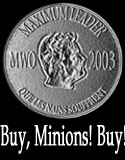Greetings, loyal minions. Your Maximum Leader probably loves rice more than anyone else in his family. He was quite distressed recently when he went shopping at one of the local “warehouse/price club” stores and couldn’t buy the 20lb bag of rice he was searching for. In fact all they had were 5 lb boxes of Minute Rice. Your Maximum Leader wonders if Minute Rice is actually rice. Anyhoo… Lucky for him he was able to nab a 25 bag of rice at another store.
Your Maximum Leader still isn’t sure what exactly caused the run on rice in this nation. The US is a great exporter of rice. There must have been some supply chain glitch that caused rice to be hard to find (in bulk at least - there didn’t seem to be a problem if you just wanted a small bag of rice).
That said, your Maximum Leader does know that in other rice producing nations - particularly those in Asia - there have been a number of factors that have contributed to rice price spikes and rice shortages. Drought has been the major factor. Your Maximum Leader read that one of the hardest hit nations was the Philippines. The Philippines has been an net importer of rice for decades now. And in this rice crunch the Philippines has been suffering. Your Maximum Leader read, with some pleasure, that Japan has agreed to sell down some of its rice surplus to the Philippines. According to the piece in the Washington Post, Japan has agreed to sell 200,000 tons of rice to the government of the Philippines. Sadly, that only puts a small dent in the problem the Philippines has. According to the reporting at the WaPo, the 200,000 tons will last about six days at current rates of consumption.
Now you might think that your Maximum Leader would want to comment on the problems of the Philippines in getting rice. That might be a good topic on which to ruminate, but that isn’t the part of the article that got your Maximum Leader to thinking. This is part that got him thinking:
The deal with Japan, though, is substantially different from the purchase agreements Manila is making with Southeast Asian countries. Japan is selling off imported rice that its people do not eat and that its government imports only because it must — under international trade rules.Although Japan grows far more rice than it needs, it has to import about 700,000 tons of the grain a year under the terms of a 1993 World Trade Organization agreement, which obligated Tokyo to open its protected rice market to foreign competition.
The stockpile of imported rice peaked two years ago at 1.9 million tons, when Japan began using about 25,000 tons a month to feed livestock.
The emergence this spring of an acute rice shortage seems to have provided Japan with a way of unloading the unwanted rice in a way that is both acceptable to its international trading partners and good for its image.
Under WTO rules, Japan needed the approval of the United States — principal supplier of the rice it reluctantly imports — before it could reexport the grain. The Bush administration said Friday that for the sake of easing world rice prices it would back the plan to sell the stockpile.
Japanese consumers, for the most part, do not like the taste of imported rice. Even if they did, they could not buy it in Japan. Their government, to protect local rice growers, keeps it off the market and stores it in refrigerated warehouses. Japanese-grown rice costs at least double the price of imported rice.
This is one of those pieces of international trade pacts that just gets your Maximum Leader fuming. Now, your Maximum Leader realizes that American rice farmers have wanted to sell rice in Japan for decades. Further he realizes that the Japanese shouldn’t protect their rice farmers in the way they do. But to have the Japanese government buy rice and stockpile it - and eventually feed it to livestock - is just ridiculous. There are many countries that need rice - hummm… Like the Philippines or Bangladesh. Those rice importers would seem to be better targets for American rice farmers.
Your Maximum Leader also wonders about the whole “Japanese don’t like the taste of imported rice” bit. This could be because the rice that the US tries to sell in Japan is a longer grain rice with less starch than the rice you traditionally find in Japan. Your Maximum Leader bets that if American farmers grew “japanese” breeds of rice and tried to sell those in Japan the response would be better. This assumes that the market could be opened.
This appears to be another example of where well-intentioned politicians get together and make bad trade pacts (or laws) and wind up badly interfering in market functions that shouldn’t have been interfered with.
Carry on.


